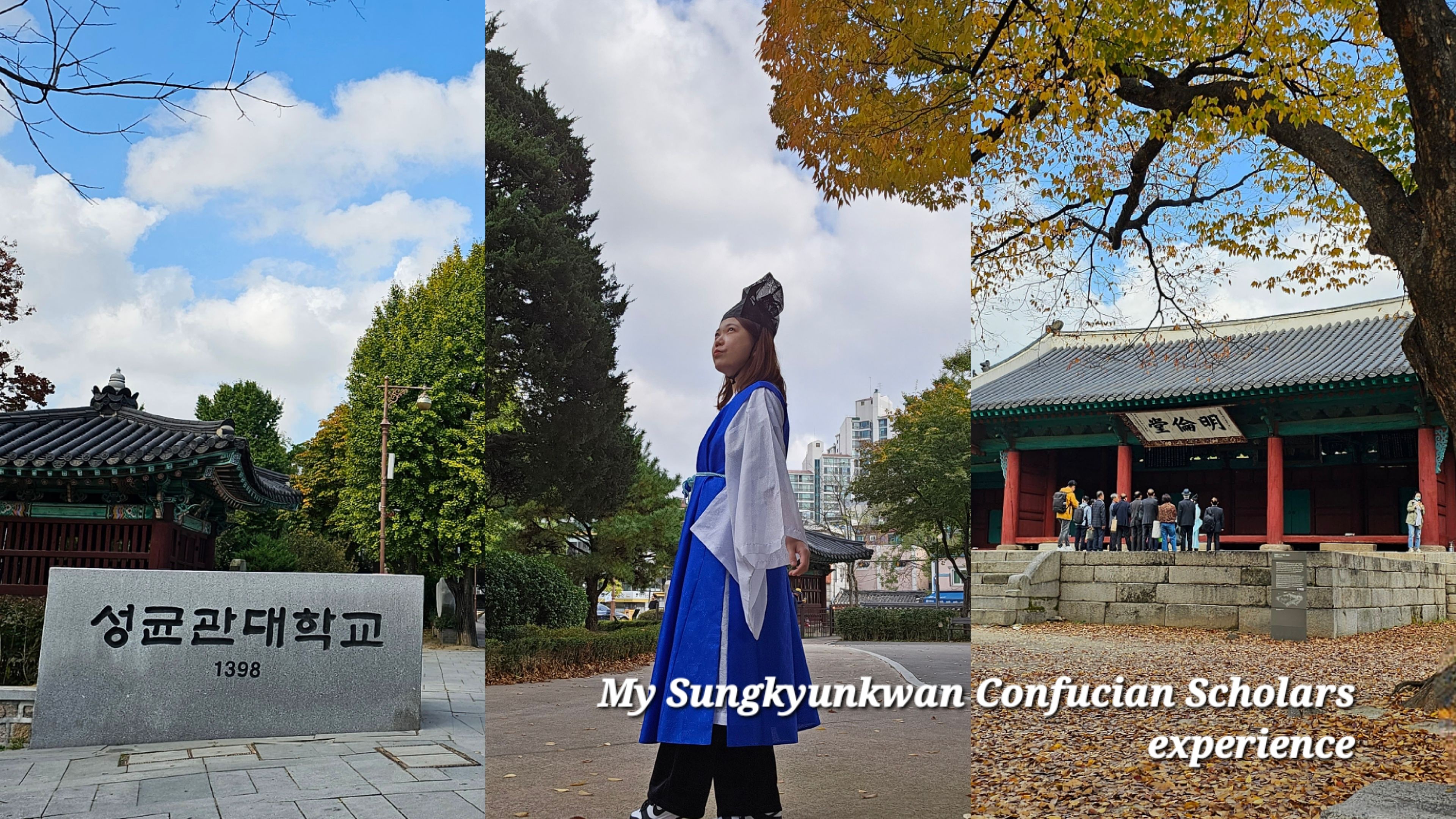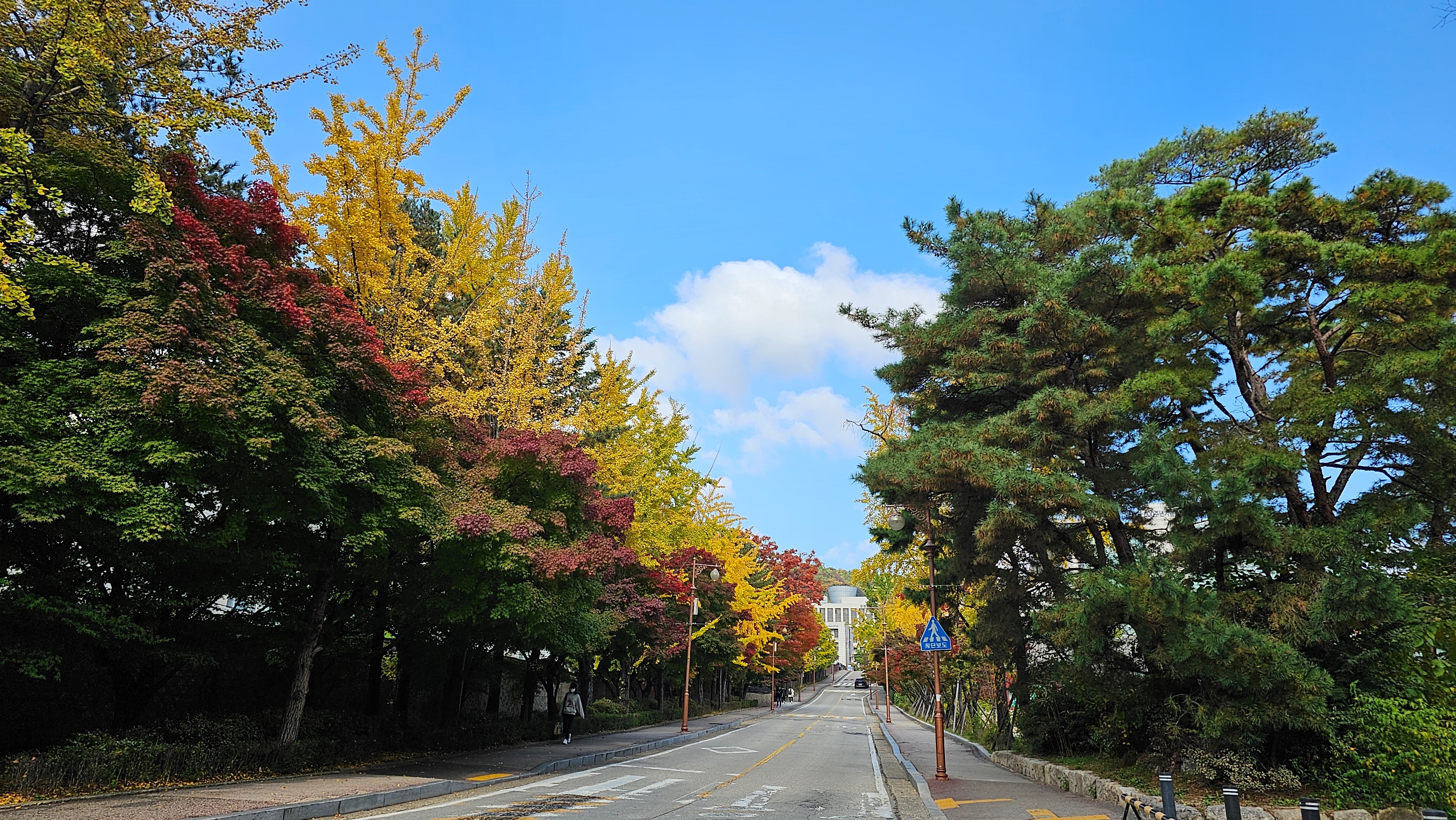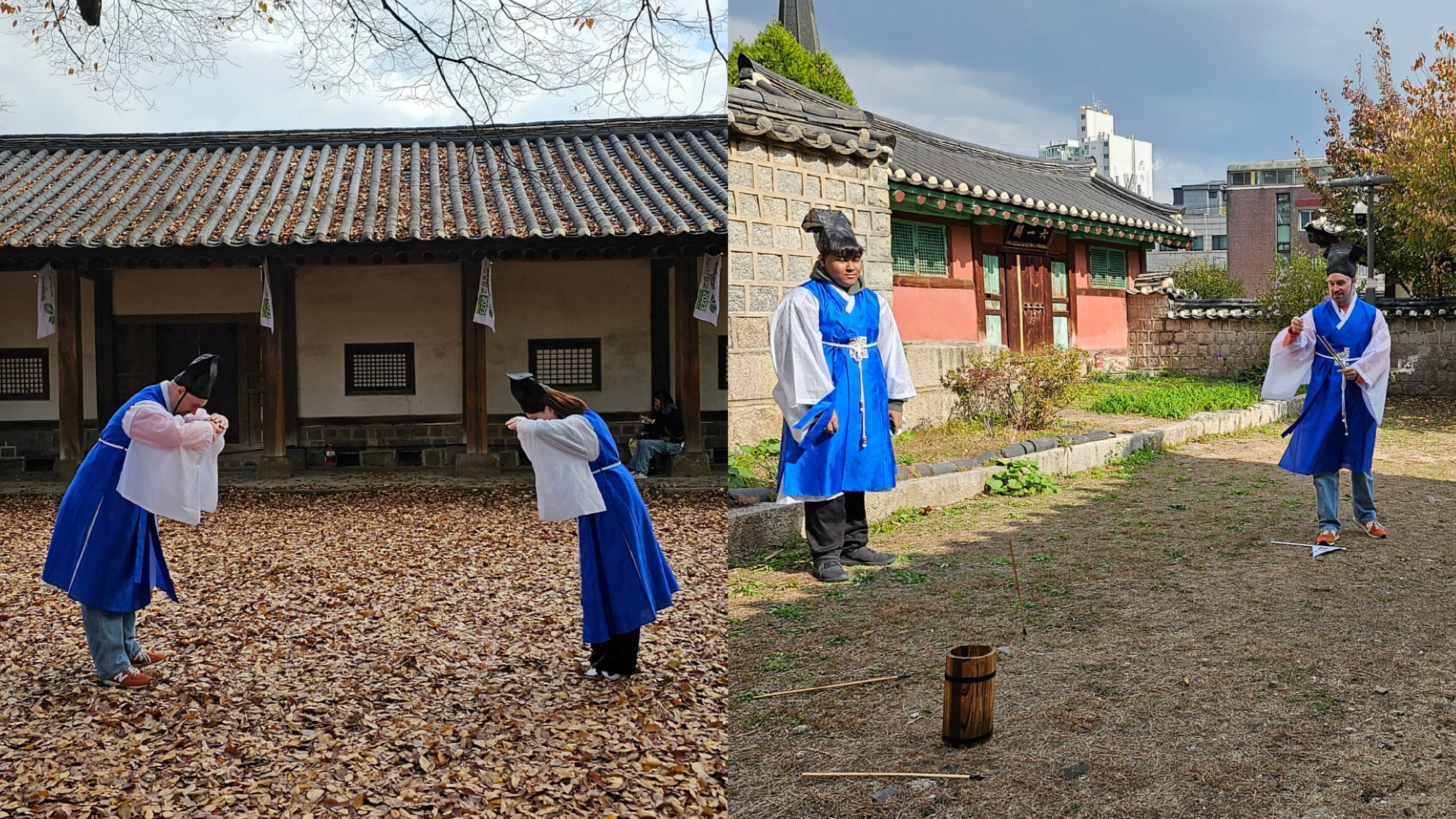- 한국어
- English
- 日本語
- 中文
- العربية
- Español
- Français
- Deutsch
- Pусский
- Tiếng Việt
- Indonesian
By Honorary Reporter Theresia Kurniawan from Indonesia
Photos = Theresia Kurniawan

Shown on the left is the main gate of Sungkyunkwan University in Seoul, the writer wearing yusaengbok (scholar costume) is in the center and the lecture hall Myeongryundang is on the right.
I joined this year's Welcome Daehakro Festival on Oct. 27 as part of a tour of the campus of Sungkyunkwan University, the oldest institution of higher learning in Asia. Held every year in the Daehangno (also spelled Daehakro) area of Seoul, the event promotes both the nation's performing arts and tourism. My initial interest in this place was sparked by the popular K-drama "Sungkyunkwan Scandal" (2010) starring Song Joong-ki.
To set the mood for the tour, the guide asked participants to wear yusaengbok, or the traditional attire worn by scholars of Sungkyunkwan, the Confucian institution of higher learning during the Joseon Dynasty. Exploring the lifestyle of such a scholar, the program offered a unique look at three traditional exams modeled after the courses at the university.
Our journey started at the campus's main gate, where a stone sign stood to guide riders in the past, instructing them to dismount and continue on foot.

Autumn is vibrant at the main campus of Sungkyunkwan University in Seoul.
Sungkyunkwan has many traditional buildings dating back to the Joseon era, one of them being Myeongryundang, a lecture hall frequented by prestigious scholars including the crown prince. The hall is surrounded by dorms and beautiful trees, with a ginkgo tree nearly 500 years old being the most iconic. The ginkgo tree symbolizes Confucian teachings, as Confucius is said to have loved reading and teaching his pupils under the gingko tree. This spot is thus a famous tourist attraction especially in fall, when ginkgo leaves turn yellow.

On the left are two participants practicing a Confucian scholar's greeting and on the right shows two more playing tuho (pitch-pot) during the tour.
At Myeongryundang, we gained insight into a scholar's life like learning basic etiquette, playing the traditional game tuho (pitch-pot) and practicing calligraphy. One of the most enjoyable tasks was learning the intricate greeting style of Confucian scholars using specific hand and body movements.
Upon completing the exams and embracing the essence of Sungkyunkwan, we transitioned to modern university life. This entailed visits to the nearby cafe alleys and Marronnier Park, the hub of the festival. The tour concluded at the park, where we took a group photo with the festival's mascot.
After the tour, I stayed at the festival to see art performances at the park and eat a delicious bowl of young radish kalguksu (noodles) for lunch.
msjeon22@korea.kr
*This article is written by a Korea.net Honorary Reporter. Our group of Honorary
Reporters are from all around the world, and they share with Korea.net their love and passion for all things Korean.